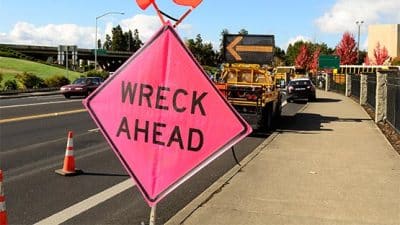The residual effects of the last major economic crash are still quite fresh, prompting those in charge of municipal spending to stall projects deemed “unnecessary”. This category, unfortunately, now encompasses more infrastructure projects than ever. This furtive approach to spending can stand in the way of significantly improving the delivery of a city’s vital services in a way that can actually end up saving the city money while improving said service to residents.
Forward-thinking cities that proactively seek to mitigate water shortages and leaks tend to fare far better financially than those who don’t. This article will examine how regularly performing pipeline condition assessments can potentially save cities millions of dollars in the long term.
Reasons for Water Leakages

A city’s water management system can deteriorate for a number of reasons. Of course, these systems obviously don’t fail overnight, but it doesn’t mean the gradual degradation of underground pipelines and water mains isn’t exacerbated when plagued by a number of different issues, coupled with a lack of system monitoring. The following list comprises the most common reasons cities experience water leakages. Without the use of adequate detection technology these issues will surely continue.
- Aging, crumbling infrastructure: Much like roads, bridges and buildings, water systems require regular maintenance in order to remain functional and to prevent cataclysmic failure. Upkeep of this infrastructure is often considered a daunting task since much of the pipelines that service most of the communities across the country have already exceeded their life expectancy, and are buried below ground.
- Weather: Extreme changes in temperature can prematurely cause system components to fail, which is why so many water main leaks can be observed in the winter months. In warm weather, meltwater can find its way into hairline fractures, and as temperatures drop, the escaping water can freeze and expand, further compromising a vulnerable system.
- Using outdated technology, or not using leak detection technology at all: There may not be a lot that can be done about environmental conditions, but any water loss due to inadequate detection processes is completely preventable. Aging detection technology needs to be upgraded from time to time, as existing solutions may have limited detection capabilities.
- City budgets: There’s really no getting around this one. Municipal governments have spending budgets and they always will. Depending on when the water leak occurs, or when the failure is detected, there may not be enough in the budget to rectify the issue in a timely manner. Depending on the city, it may also be unrealistic to expect miles worth of underground infrastructure to be replaced all at once.
- Rising population, droughts and pollution: The more people that draw on a city’s water, the greater the strain put on the system. Certain pollutants can also contribute to the degradation of an underground pipeline system, thus reducing its lifespan.
The Problem
If many of the most common issues are known and understood, then why do water leaks remain a big, and expensive, problem for cities? The reason is that most water systems are comprised of vast networks of underground pipelines of various ages, sizes and are made from different materials. In many cases, some cities may have a portion of their underground water system that has been replaced in the last 10 years, while the rest of it may be closer to 100 years old. As a city’s population increases, so too does the number of flanges, hydrants, valves, sleeves, manifolds and pressure reducers. Much like the pipeline itself, these components degrade over time and must also be replaced. Being able to physically locate corroded or otherwise compromised components is a difficult and time-consuming task without the right detection tools in place.
How to Spot Water Leaks Sooner and Prevent Water Loss from Occurring
A large leak is a double-edged sword: on the one side, a large leak is quite easy to detect, but it often comes with a hefty repair cost and disruption of service. Small leaks, on the other hand, are much cheaper to repair, but they require a greater degree of sophistication to identify. This is what makes water pipeline leak detection technology so vital. Conventional assessment methods can cost a city millions of dollars on an annual basis, whereas a solution that utilizes ultrasensitive sensors and software to accurately pinpoint the locations dubbed critical is a far less costly endeavor and a much more efficient use of resources.
Small leaks, left unattended, can result in water loss in volumes far greater than a large rupture, and compromise the surrounding infrastructure to a greater degree. So, what can be done?
-
- Invest in a modern leak detection system that couples sensing equipment and software that can monitor pipeline conditions and alert utility managers about potential or current leaks as they occur.
- Acoustic leak detection systems are minimally invasive and are generally installed and accessible above ground. These sensitive instruments send high-frequency pings along a stretch of pipeline and can determine if and where a probable leak will occur, depending on the data that is collected. Information is collected 24/7 and sent back to a command location.
- Continue condition assessments. While technology may one day perform the bulk of the monitoring services, there is still a place for conventional condition assessments. In fact, the technology can be used to help maintenance crews focus their efforts on specific sections of the pipeline.
Why Echologics—The Best Solution for Your City
With so many different solutions on the market, why entrust your city’s water system to Echologics? Echologics recognizes that the best way to discover damage is to invest in the types of systems that complement one another. This means embracing the kind of technology that aids and doesn’t replace maintenance personnel and assessors. Acoustic monitoring is a highly reliable method of keeping an eye on an underground water system, and one that can be relatively simple (and non-invasive) to upgrade as the state of the technology continues to evolve. Unlike other solutions, acoustic monitoring has the benefit of continuously monitoring the system even when sections are being inspected or repaired.
Permanent Value Maintenance
Since the job of maintaining and improving a water system will never truly be finished, constant monitoring and maintenance are important to not only ensure the supply of clean drinking water but also when it comes to saving money. In order to maximize the city’s maintenance and repair budget, it only makes sense that a great deal of effort goes into planning and executing as many maintenance activities as possible in a given year. Naturally, this can only be done with a sophisticated detection system in place. Since locating a leak won’t require experimental digging excavations, the number and cost of repairs will be significantly reduced.
If you’re on the lookout for a leak detection service provider that has the expertise in conducting assessments on many different types of pipe materials, check out Echologics.










